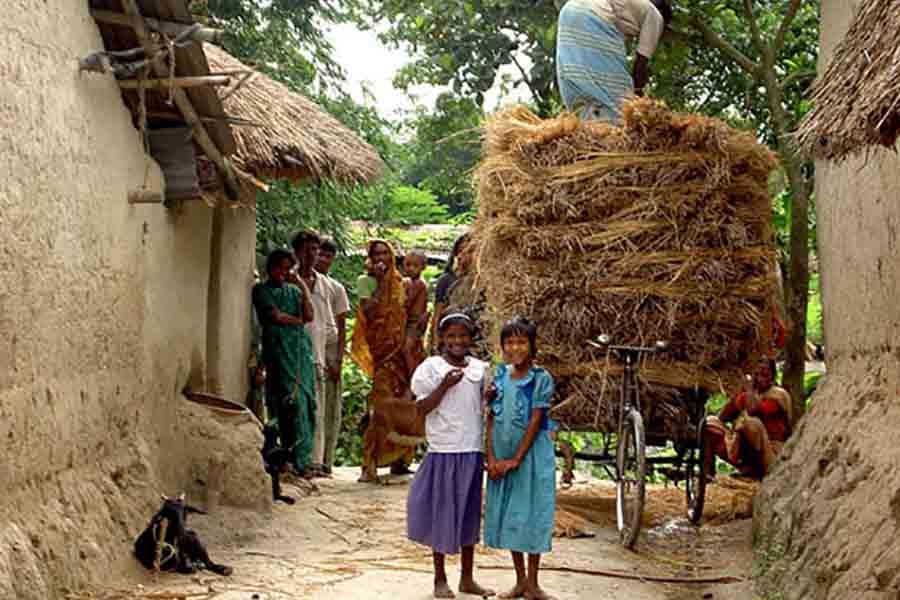Poverty can be both persistent and short-lived. The former may be adducible to structural reasons while the latter to temporary factors. Persistent or long-term poverty implies a state of poverty that persists for a long period of time, say, for years. It is like a poverty trap. It is mainly fuelled by structural problems. On the other hand, short-lived or transient poverty is related to the swings in socio-political and economic environments in any given society. It is relatively short-lived and mostly derived from shocks - natural or man-made, domestic or international.
Households have to live in poverty due to structural factors. The question is: what is the time dimension of persistent poverty? Some economists maintain that the time-span may extend to generations and 13-15 years could be considered as the minimum.
On average, about one-third of rural households could be identified as poor in a longitudinal survey spanning two or more decades. Almost same is the level of short-run poverty. That means that, short or long-term, roughly one-third of rural households continues to remain poor, whether from short-run or long-run perspective. Unfortunately for them, there is no light at the end of the tunnel to pull them out of the shackles of poverty. Existing socio-economic, demographic, and political factors are responsible for this.
However, empirics tend to show that a quarter of the rural households of the country have eventually crossed the poverty line. This implies that, despite facing repeated severe shocks, these households have never surrendered to poverty. May be, fortune favoured them in accessing land, education or institutions.
However, 40 per cent of the rural households remain transient poor - walking up and down the ladder of poverty. The main reasons for ups and downs are not related to structural constraints, but to short-run random shocks like natural calamities, health problem, and risk in business. Recent examples of such factors are the two consecutive natural calamities and the man-made disaster in Myanmar that pushed into Bangladesh thousands of people to compete with limited resources in Cox's Bazar. It is alleged that the intrusion of Rohingyas adversely affected the poor households to put them in poverty.
However, the observations presented above can be compared with the observations of earlier researchers. They report that 31 per cent of rural households in Bangladesh are chronic poor. And it is almost exactly the figure we arrived at. Again, the researchers have argued that a quarter of the rural households are chronic non-poor. In between, 45 per cent are led by the luck - 26 per cent moving up and 19 per cent moving down. The eloquent exposition of the researchers is worth noting and we paraphrase it for our readers: to slip in and out poverty (in or outside) does not occur through a random path. The possibility of staying away from poverty is sensitive to primary asset endowments (such as owned land). Those who have come out of the 'poverty-cave' - and we can call it exit ratio - are mostly asset owners. In other words, roughly two-thirds of them were vastly endowed with primary assets, about half of them had modest assets, and 40 per cent had no satisfactory assets.
What are then the reasons for a descent or slip into poverty? We observe that households facing deterioration in economic conditions are severely constrained by demographic elements. Most of them have large household size and small number of earning members. For this reason, these households are left with little surplus to put in productive pursuits. Second, they have no human capital and increasingly they face erosion of their natural and financial resource base. And finally, these households often face random shocks, such as early flood, flash flood, crop failure due to severe drought or death of the earning member.
To get out of poverty, rural households adopt a number of strategies. We can identify them as unsuccessful and successful strategies of livelihoods. Among the unsuccessful strategies, we want to highlight occupational mobility (a) from farm to non-farm sector, (b) agricultural labour to farming and c) agricultural labour to non-farming. However, among successful strategies, we may mention (a) geographic mobility, (b) increase in the number of earning members, (c) raising education status of the earning members (d) cultivation of modern paddy, and (e) increased access to electricity.
Here are some observations from policy point of view: (a) market-driven occupational mobility brings about peripheral changes in the economic status of the poor; (b) shift to non-farm sector cannot be expected to resolve the underemployment problem; and (c) the emancipation of the poor through livelihood migration to off-farm activities is conditional on enhancement of human capital and better access to technology and infrastructure
It is true that we have observed a decline in rural poverty in tandem with 'satisfactory' rates of economic growth over time. And possibly for this reason, there is a scope to consider growth as the main driver of poverty reduction. But proper distribution of wealth should always matter along with growth. This is, because distribution not only helps poverty reduction but also facilitates economic growth.
Abdul Bayes is a former Professor of Economics at Jahangirnagar University.


